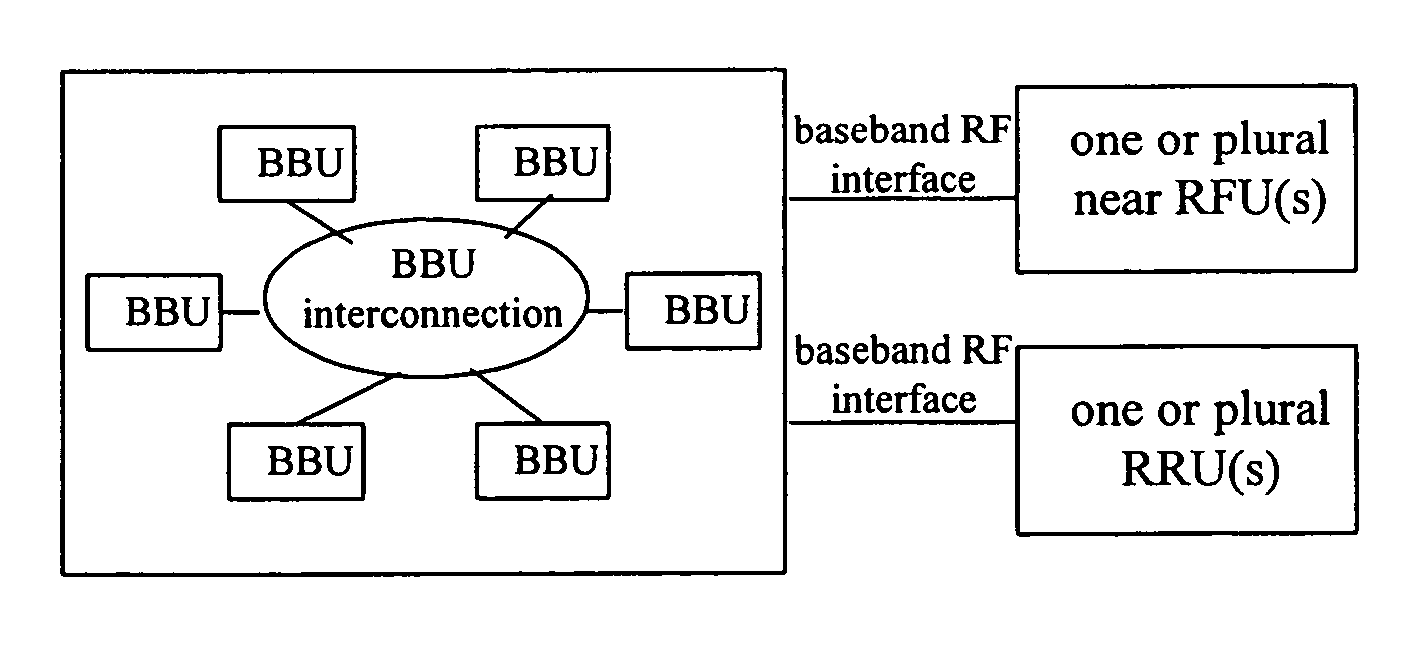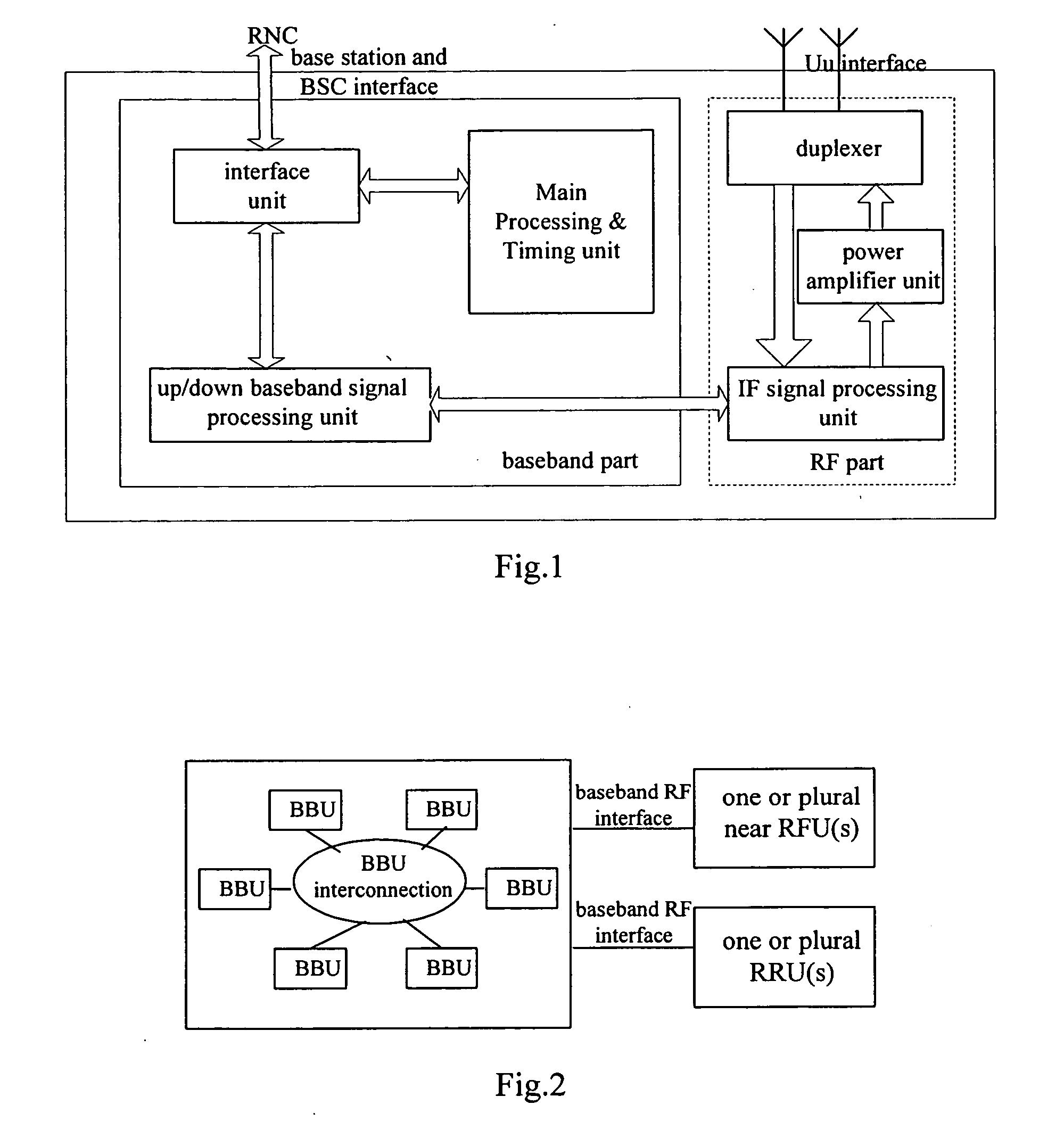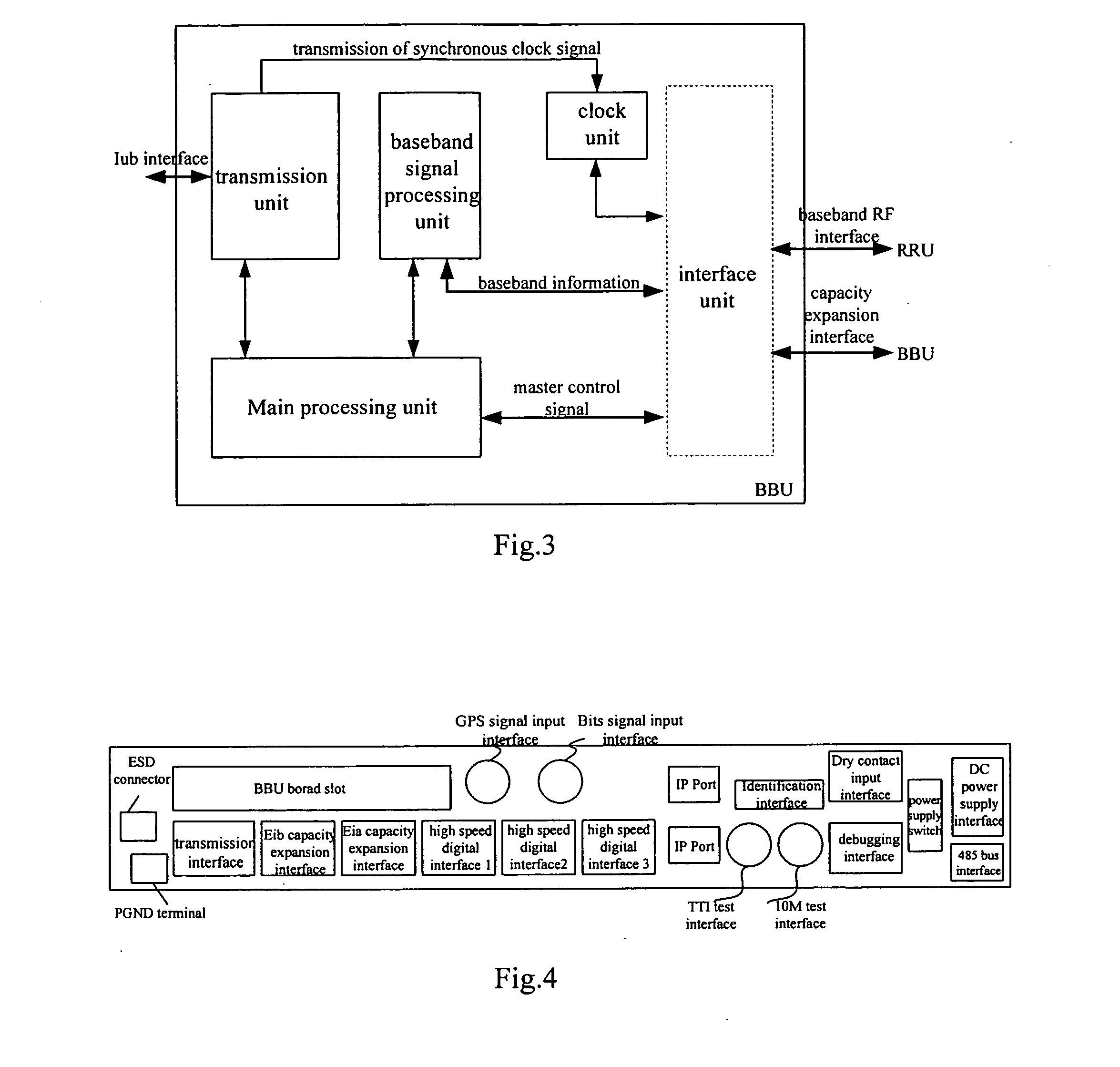Distributed based station system and method for networking thereof and base band unit
- Summary
- Abstract
- Description
- Claims
- Application Information
AI Technical Summary
Benefits of technology
Problems solved by technology
Method used
Image
Examples
first embodiment
[0116]FIG. 8 (a) is a schematic diagram illustrating the network structure with one BBU and three RRUs. As shown in FIG. 8 (a), one BBU and three RRUs are connected respectively via a base band RF interface. Each of the RRUs belongs to a sector, and each of the RRUs adopts a networking configuration with single carrier wave. That is, the networking mode illustrated in FIG. 8 (a) supports networking of 3×1 configuration, in which 3 refers to 3 sectors, and 1 means single carrier wave.
second embodiment
[0117]FIG. 8 (b) is a schematic diagram illustrating network structure with two BBUs and three RRUs in the present invention. As shown in FIG. 8 (b), the BBU1 and the RRU2 are connected via an Eia capacity expansion interface to form network with master-standby relationship. The BBU1 and the BBU2 are connected with three RRUs respectively via three base band RF interfaces respectively, each of the RRUs belongs to a sector, and each of the RRUs adopts a networking configuration with single carrier wave backup. That is, the networking mode illustrated in FIG. 8 (b) supports networking of 3×1 configuration, in which 3 refers to 3 sectors, and 1 means single carrier wave. Suppose that the slot position label of the BBU1 is preset as a master BBU identifier, and the slot position label of the BBU2 is preset as a standby BBU identifier, then, the operation principles of the networking in FIG. 8 (b) are described as follows. After accomplishing the networking as illustrated in FIG. 8 (b), ...
third embodiment
[0119]FIG. 8 (c) is a schematic diagram illustrating network structure with two BBUs and three RRUs. As shown in FIG. 8 (b), the BBU1 and the RRU2 are connected via an Eib capacity expansion interface and form a network with master-slave relationship. The BBU1 are connected with three RRUs respectively via three base band RF interfaces. Each of the RRUs belongs to a sector, and each of the RRUs adopts a network configuration with two-carrier wave. That is, the networking mode illustrated in FIG. 8 (c) supports networking of 3×2 configuration, in which, 3 refers to 3 sectors, and 2 means 2 carrier waves. Since the BBU1 and the BBU2 have a master-slave relationship, the BBU uplink / downlink data capacity is increased to twice of that when a single BBU is used.
[0120] The operation principles of networking illustrated in FIG. 8 (c) are completely the same as those in FIG. 8 (b). The difference between them is in that in FIG. 8 (c), failure of the BBU1 is only reported to the RNC with no ...
PUM
 Login to View More
Login to View More Abstract
Description
Claims
Application Information
 Login to View More
Login to View More - R&D
- Intellectual Property
- Life Sciences
- Materials
- Tech Scout
- Unparalleled Data Quality
- Higher Quality Content
- 60% Fewer Hallucinations
Browse by: Latest US Patents, China's latest patents, Technical Efficacy Thesaurus, Application Domain, Technology Topic, Popular Technical Reports.
© 2025 PatSnap. All rights reserved.Legal|Privacy policy|Modern Slavery Act Transparency Statement|Sitemap|About US| Contact US: help@patsnap.com



